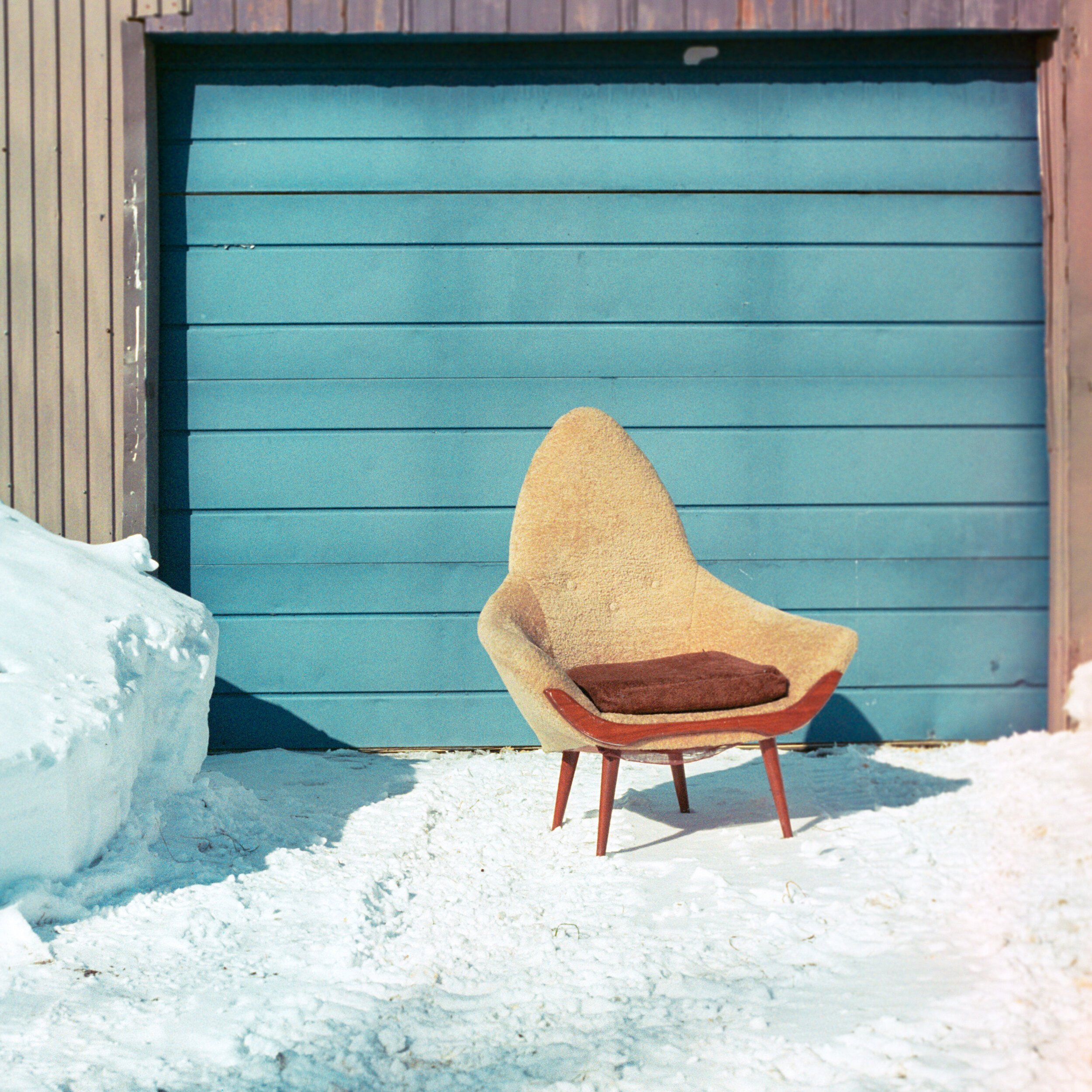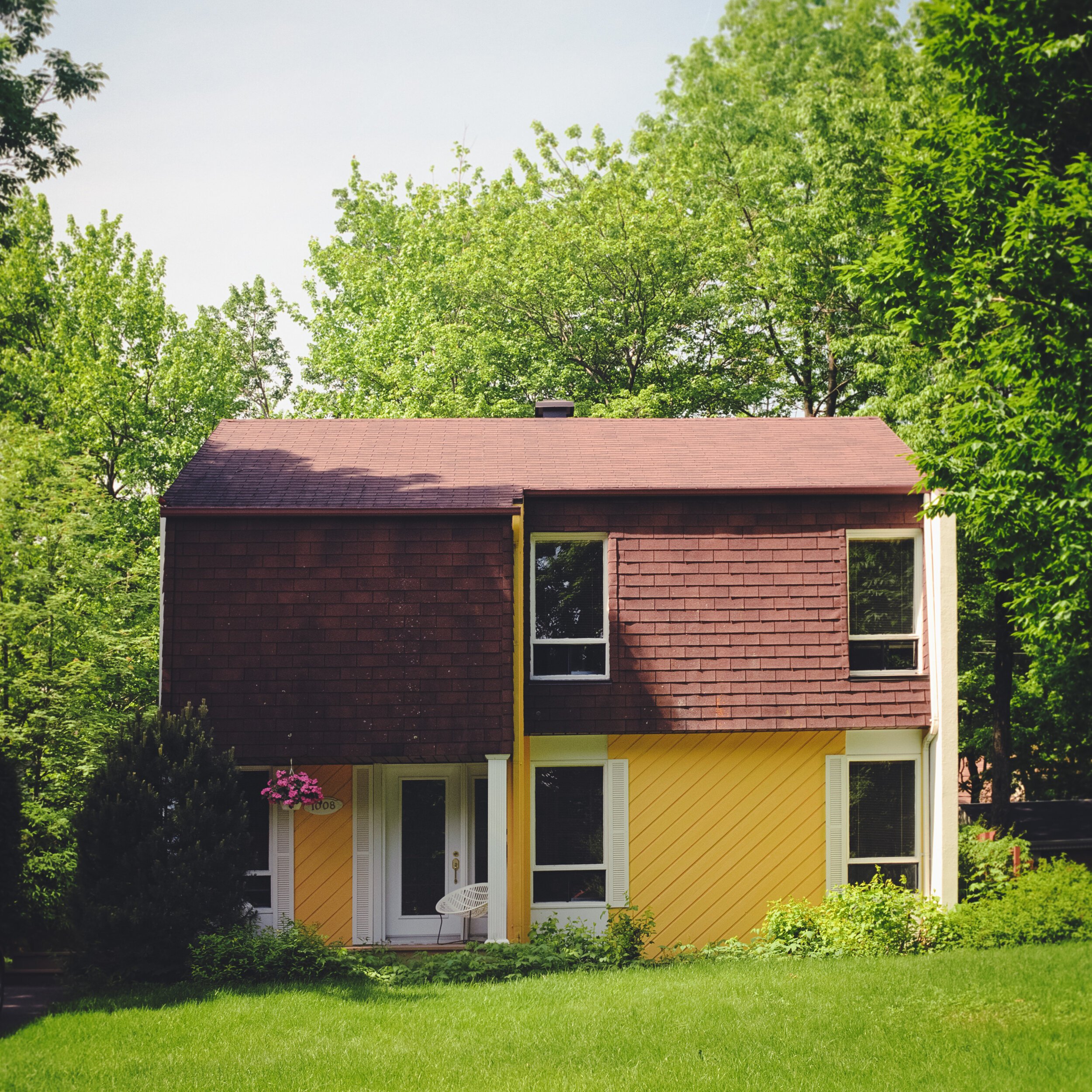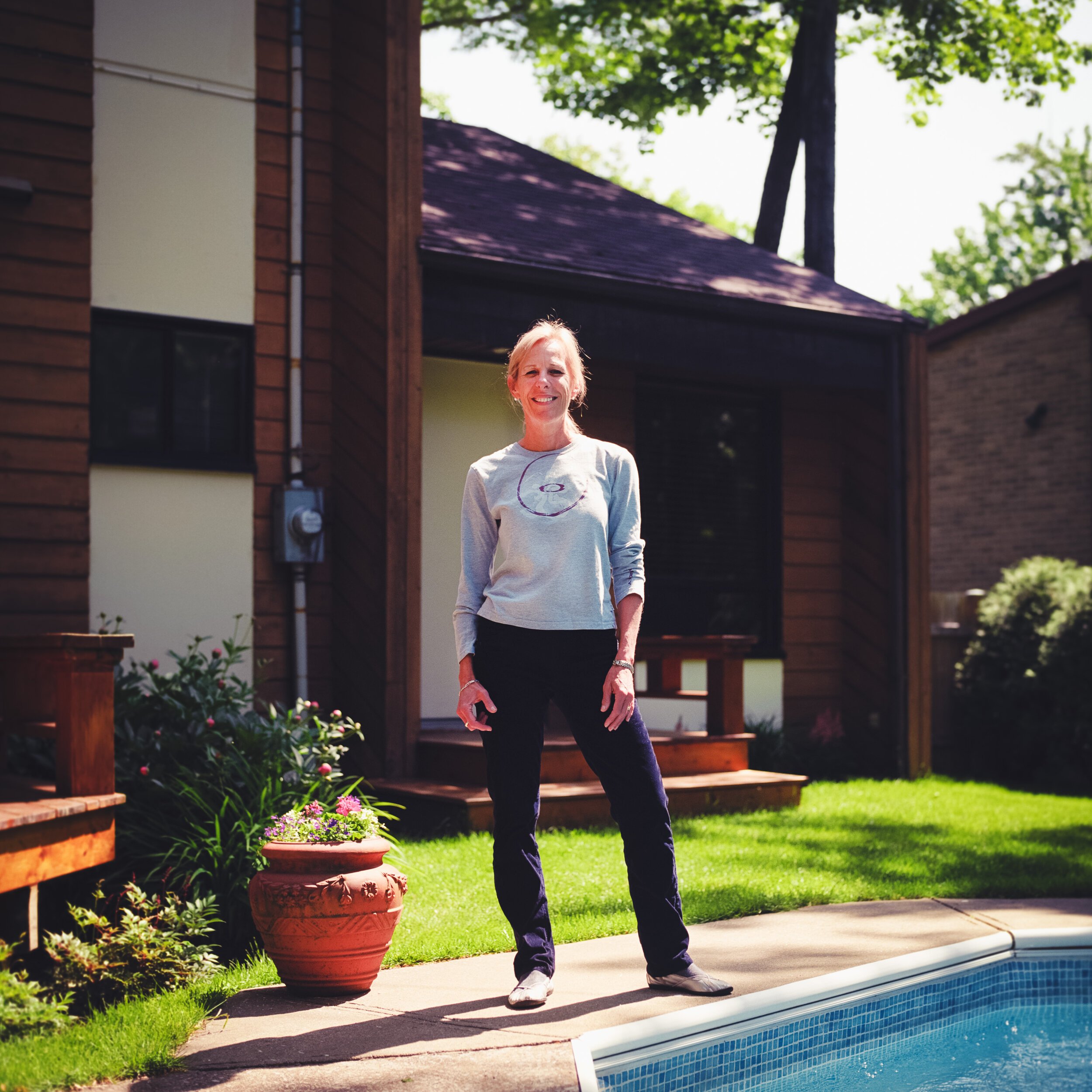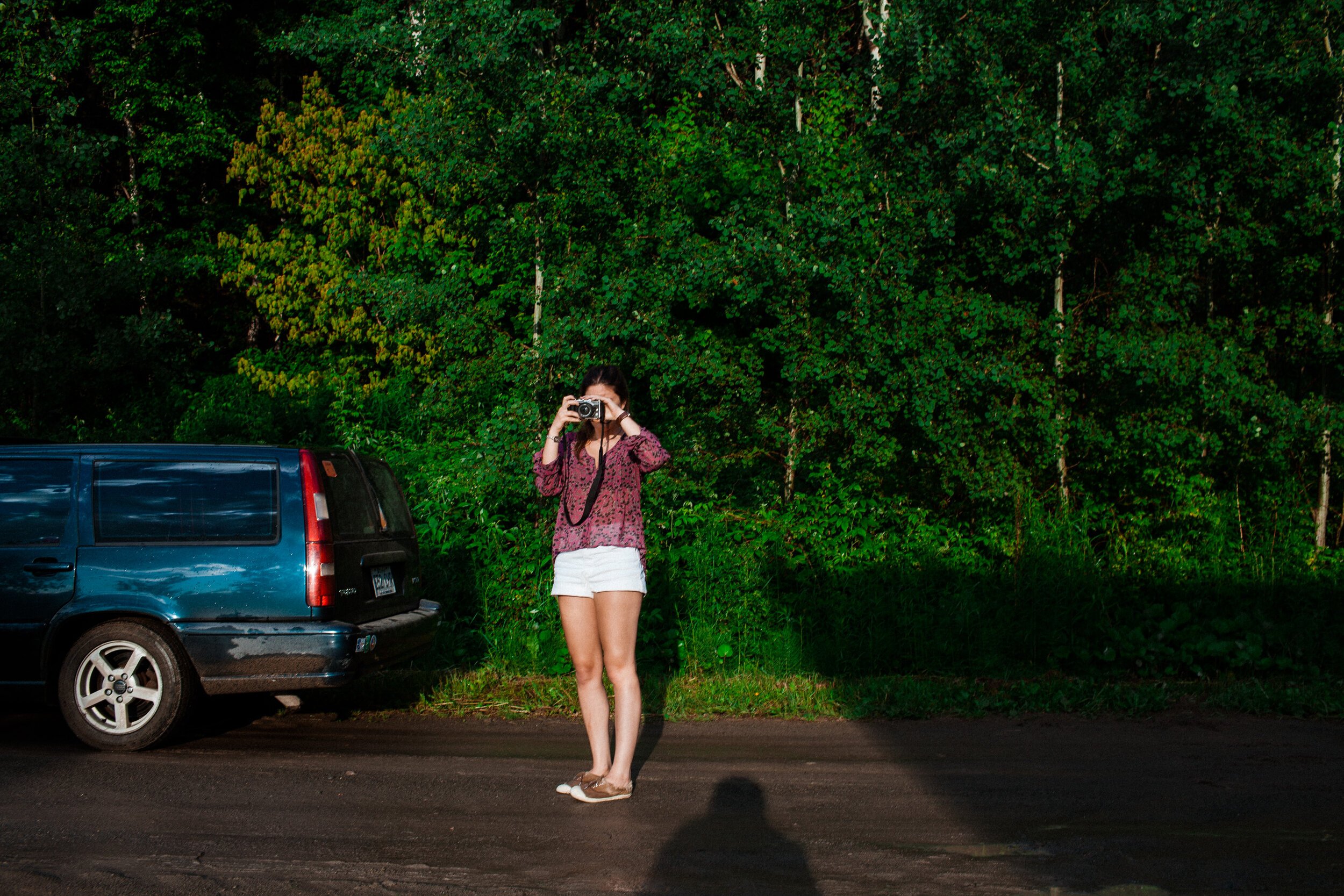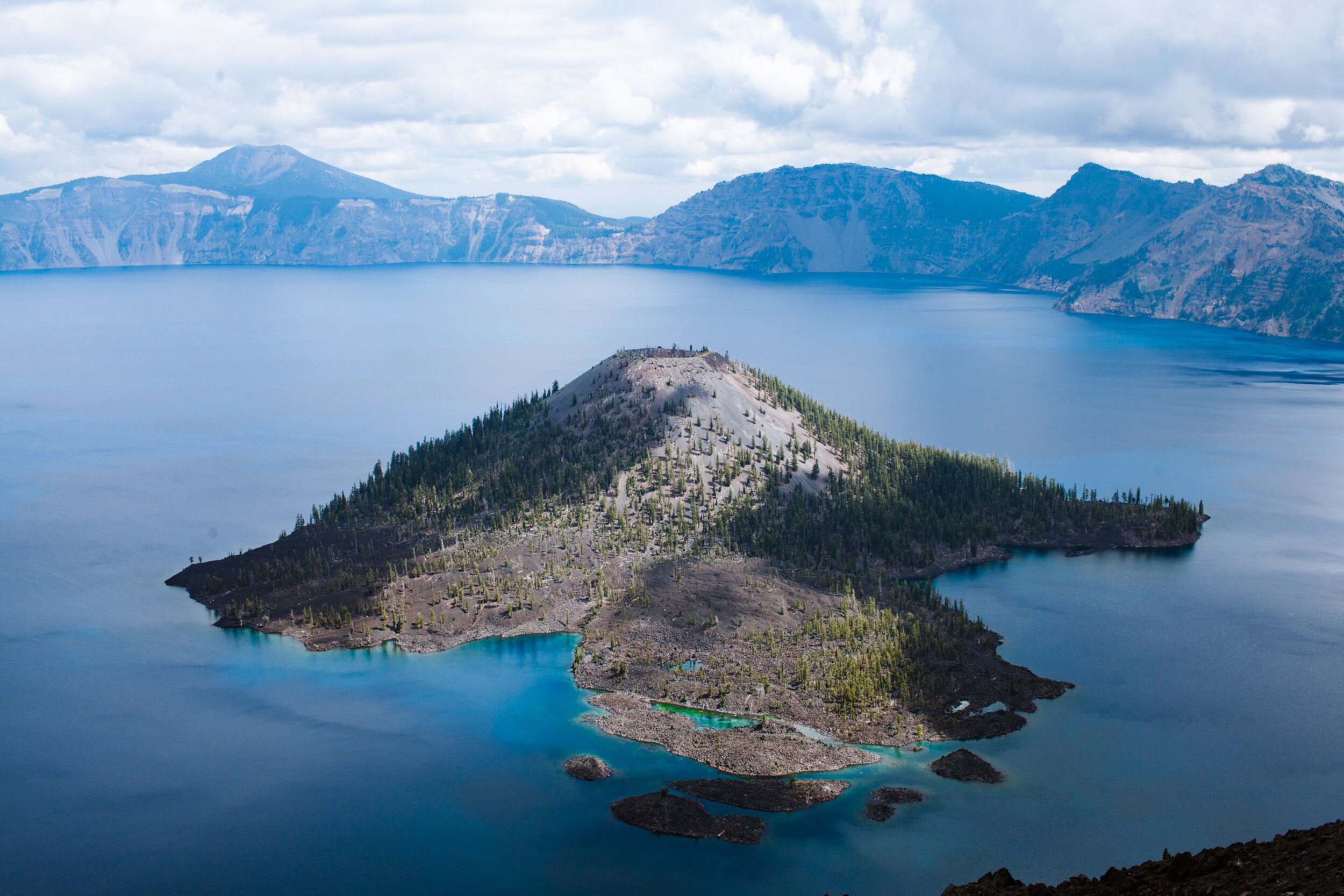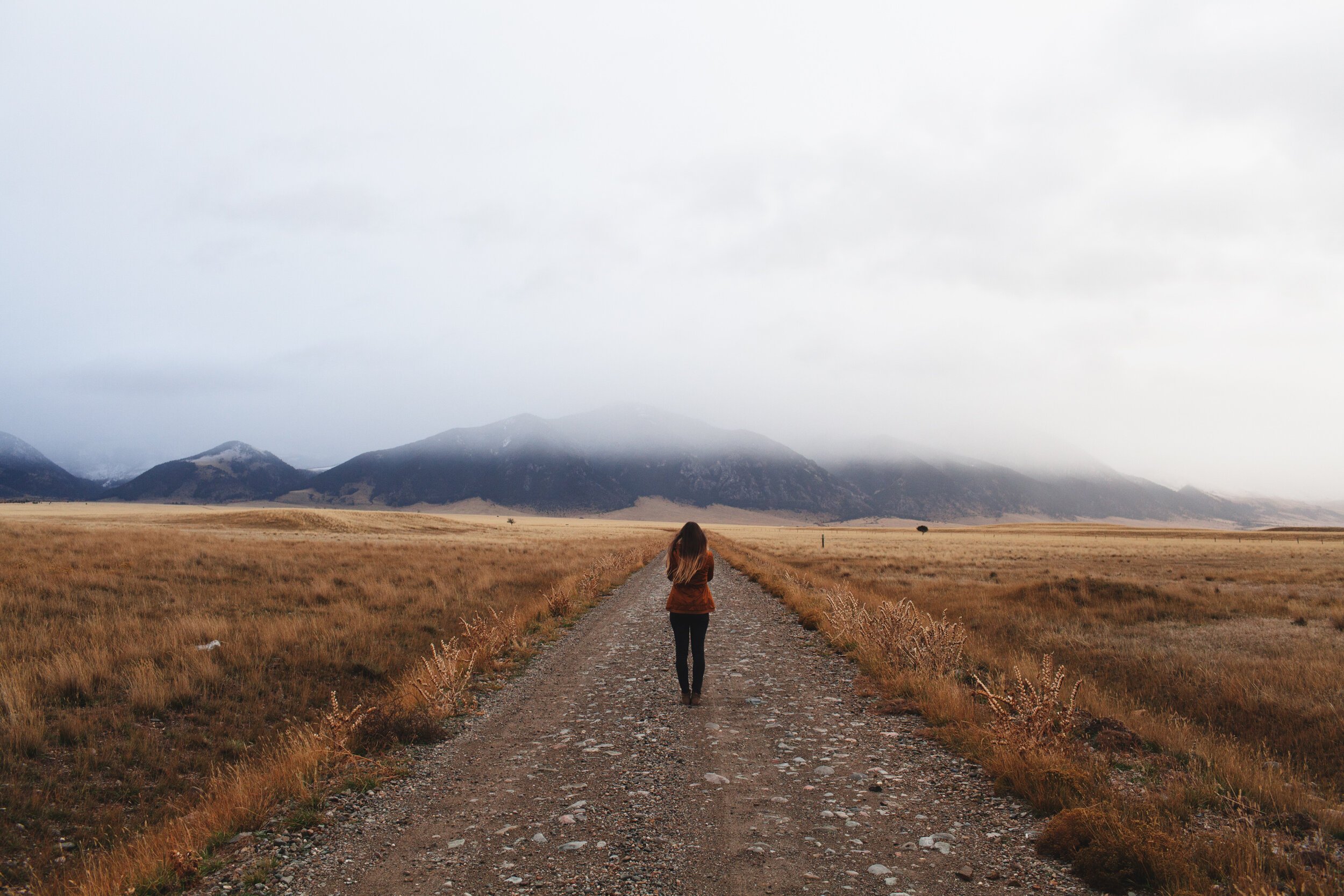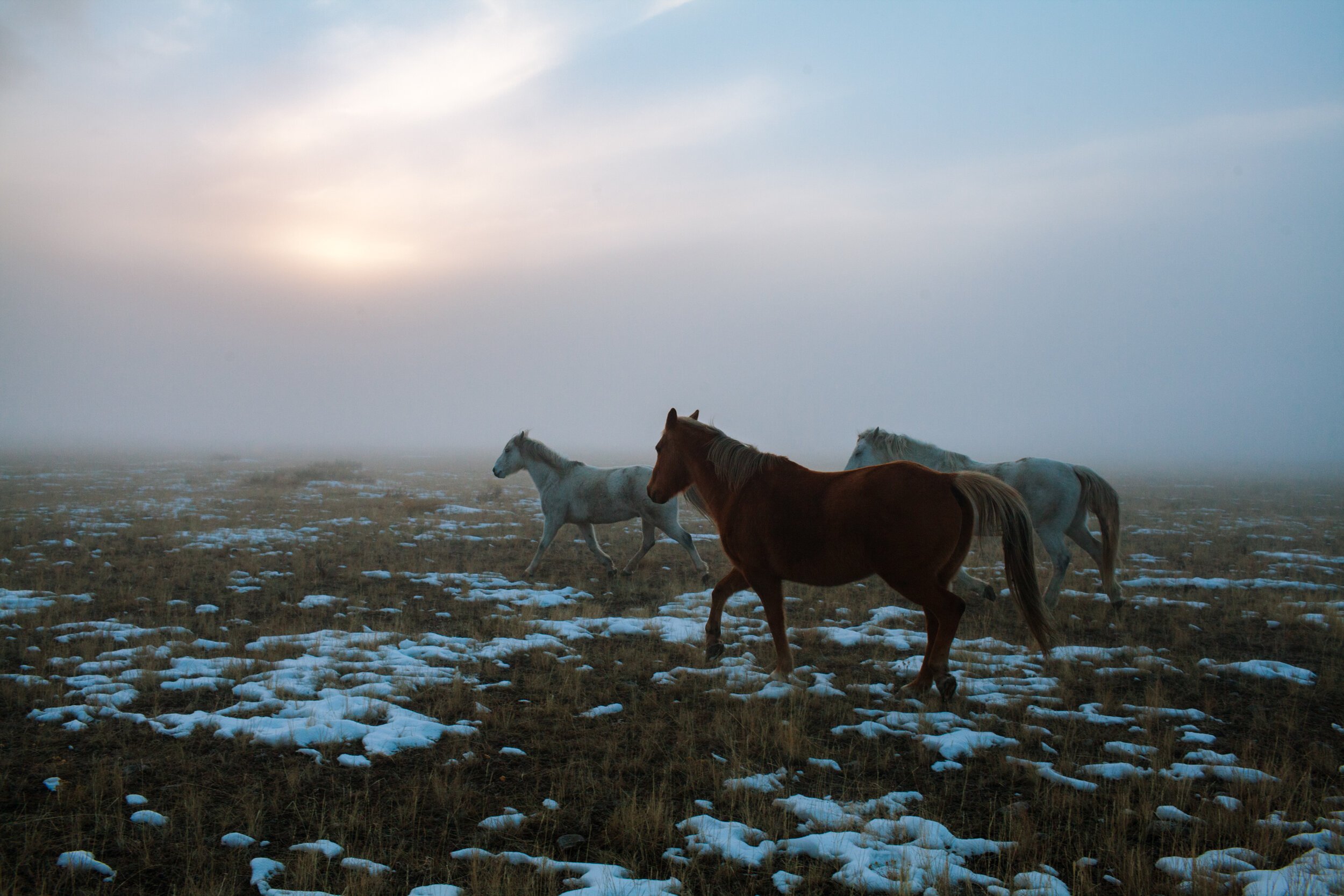Quebec - The Places That Impacted Me Most
I stormed into my parents' bathroom just after 6 p.m.—Dad was taking his daily post-work bath and I knew he would be relaxed enough to be receptive to what I had to say.
"France is becoming too small for me; I want to go to New York to finish my studies," I proclaimed.
"I was wondering when you'd ask," he replied. "Last month I read an article about how a lot of youngsters are fleeing France to go study and work in Québec."
"That's nice, but I want to go to New York," I countered.
It's worth noting that my family has a tradition of debating anything and everything. We love long argumentative conversations—inevitably they get heated—but whomever makes the strongest points rightfully claims victory. It was a thrilling environment to grow up in—if you had intelligent, thought-out points, your ideas could be adopted by the entire family. (Extra points if you thought outside the box.)
"New York is great, but university in the United States is very expensive, especially if you are from another country. It's crazy money, we won't be able to help. Go to Québec where you can pay in-state tuition [France and Québec have an agreement]. It's a giant country to explore, I've always dreamt of having a log cabin in the forests of Canada... you'll understand why when you go there."
"I'll look into it... Thanks," I replied, hesitantly.
I ran up to my room, Googled Québec and was immediately blown away by its size. The province is nearly three times the size of France with only eight million inhabitants. I was hooked. A few days later, I applied to a number of universities with graphic design programs—I was accepted at Université Laval, just outside Québec City. In September of 2010, I'd board a flight to Canada to finish my studies. Deep inside, I knew I wasn't coming back.
Although I was very sad to be leaving my best friends behind, I was thrilled for a new life. I previously felt that way when we moved from Spain to France, but was addicted to the adrenaline of starting everything from scratch.
Québec was formative in several ways. The architecture was different, the cars, the environment, nature. And I had loads of free time.
The first long road trip I took in Quebec — Route 389 to Fermont (also known as The Middle of Nowhere). Shot with the Olympus OM-1, 28mm Zuiko lens, Delta ISO 3200 film.
Enrolling at university in North America was incredibly exciting. In France, I attended a design school that functioned similarly to a high school: you're given a class schedule at the beginning of the year and you just follow it. In Canada, I got to chose my classes which meant I could finally build my own schedule. It was the first step toward building the life of my dreams. I'm not a morning person so I built a class schedule that allowed me to work late into the night, wake up late, eat brunch and go to class. And three day weekends? Sure, just build it into your schedule at the beginning of the semester. It blew my European mind.
I feel obliged to mention that I was in college to study graphic design and art direction, not photography—at least, not initially. But when I was building my first semester schedule I saw Introduction to Photography classes which were taught exclusively on film by old school professionals. At the time, I owned an entry level DSLR and had roughly taught myself how to use it, but I lacked the foundations. Learning from "real" photographers once again felt so removed from my previous schooling. So I took the class.
One of my first projects in that class was "Photographing Chairs Outside." I was into mid-century design and furniture from that era fascinated me, so I went down to every thrift shop in town. I scored three weird chairs that most resembled the aesthetic I was after. Together, the chairs cost me $65.
Chairs Outside — Shot on Hasseblad 500 C/M, 45mm F2.8 lens, Ektar 100 film.
I carried those things on the roof of my rusty Subaru everywhere. Having just gotten my first car, I drove around frequently in search of new places to photograph. I encourage anyone starting photography to build themselves a project and follow through on it. It can be as simple as two old chairs! Whatever interests you. Those old pieces of furniture taught me a lot about composition, background, color and, most importantly, light. The fact that they were inanimate meant I could take as long as I wanted to photograph them, changing angles as I wished, seeing light react on the different surfaces, all without feeling the pressure of a waiting model.
Another chapter in my time in Québec was the architecture. My fondness for mid-century furniture was an extension of my interest in architecture from that era. Back in France it was quite rare to stumble upon that design. (Most houses in France are far older than the 1950s.) But Québec was the new world, and there were neighborhoods filled with minimal architecture. Another school project involved photographing the owners of the most remarkable mid-century houses in front of their homes. That project put me further outside of my comfort zone, knocking on strangers' doors unannounced, explaining my project, and convincing them to stand outside for a portrait. It kind of turned me into a door to door salesmen, a skill that became quite useful when selling my ideas to clients.
“Similarities” shot on Hasselblad 500 C/M, 45mm or 85mm, Ektar 100 film.
Québec was home to many firsts for me: my first time thousands of miles away from family and friends, my first car, first long road trips, first camping trips, my first experience with intense seasons, and the first time I was exposed to true wilderness. A wealth of first experiences led to the most exhilarating period of my life up to that point. I was imbued with a realization that I knew very little about the world beyond my upbringing. When you grow up in one place you think you have a grasp on how the world works, but when you start traveling and living in other places you begin to recognize the vast diversity of the world. Customs and mannerisms change among different countries, states, even cities. Geography and weather vary greatly in just a few hundreds miles. The thrill of a new experience, culture, scene or idea is what makes exploring the world so exciting.
Canada's expansive wilderness shocked me. You could drive any direction outside Quebec City (population one million) for 15 minutes and feel in the middle of nowhere, surrounded by forest. Throw in an extreme weather dynamic with vibrant falls, sub-zero winters and sweltering summers, and it's a venerable proving ground for anyone seeking adventure.
My Québec chapter wouldn't be complete without meeting Andrea, my wife. Andrea landed in Québec a year after I did, also chasing new experiences. I instantly recognized her burning desire to try new things the first time we met at a dinner party. She was fresh off the plane, jet-lagged, but still making an effort to socialize. I saw her across the room and thought she was quite pretty. I introduced myself and we hit it off. She wanted to show me a photo on her iPhone but her SIM card didn't work in North America. At the time I had a side hustle where I'd unlock foreign students iPhones to work with Canadian SIM cards, so naturally I offered to help her out (free of charge, though!). We didn't know it yet, but the following day's appointment became our first date. We were dating by the next week. Because I had a decent lay of the land, I could share my excitement about Quebec with Andrea—I took her everywhere. I became a sort of photography / adventure tour guide (and if you have ever tried to learn something, the best way is to teach it to someone else).
Too excited to sleep - somewhere on the Cote Nord, Quebec
Andrea shot on Canon 5D Mark I & 35mm 1.4 L Lens.
Slowly Andrea's interest in photography grew. She borrowed my old Olympus OM-1 and developed her own vision. We went everywhere, as far north as the road could take us. Andrea became my muse, always ready to go on a trip and be photographed. Her presence provided another essential element to building photography skills—the availability of an eager model to experiment with.
Those three years were among the most formative of my life. It started with putting myself out of my comfort zone and developing a craving for the unknown. Subsequently, I proactively added a photography routine: every week I'd go out and shoot—there was no missing it. While I was out, I embraced an "anything goes" mentality—few ideas or places were too far to explore. (I once traveled 1,000 miles to photograph a forgotten mine in Northern Quebec where only a few rugged men lived.) I chased weird things on purpose. I didn't try to calculate if it would help me or not. I just went.
Nowadays, I believe the advent of Instagram makes us far more calculative. We gauge whether a photo op is worthy and try to predict if our audience will appreciate that place. It's not good for creativity. If I can offer just a sliver of humble advice: you don't need to burn the house to be more creative. Take small steps toward new experiences. Do with what you have, where you are. Put in the volume and keep your mind open: pair repetition and persistence with bottomless curiosity.
Montana (1/2) - The Places That Impacted Me Most
I looked at the yellow rolling hills with pure excitement, a warm feeling was going through my body, it felt like I was meant to be there.
Seeing Montana for the first time in my life.
It was the spring of 2009 and I was on a cross-country road trip with a college buddy named Marco. We left home in Quebec City, Canada, and pointed our old Subaru Wagon toward Los Angeles, planning to take our time in the Rocky Mountains. After driving all day through the Dakota flats, we finally entered the highly anticipated state of Montana. We only had two days to get a feel for it before we have to cross back into Canada on our way west.
Growing up I heard countless stories from my dad who—for what now feels like fortuitous reasoning—studied forestry in Missoula in the 1960s. Those two years my French-born father spent in the American West had been so impactful for him that he showered my brother and I with epic tales ranging from backcountry skiing bear encounters, to the life of a ranch hand, to getting lost in blizzards, and simply baking a lot of soufflés for bewildered Montanans. There was no shortage of inspiring material for a twelve year old.
Frederic Strohl’s Montana adventures:
And so it was that 42 years later, Marco and I spent two days romping about the northwest part of the state (the most beautiful part, in my view) and crossed into British Columbia on our frenetic coast-to coast jaunt. Truthfully, I don't remember much about that time in Montana except for the sign of the Big Sky Motel somewhere back on Interstate 90, and Flathead Lake. Driving the western shore on a sunny afternoon was pretty impressive for a guy who was used to quaint European landscapes. The lake is enormous—so big, in fact, that "you can see it from space," as the locals say.
In fact, I don't remember much about that entire trip, except that neither of us used a cellphone nor a GPS on the entire trip. And yet, it’s on that trip that I decided to dedicate my life to making photographs of the natural world.
It's important to note that my dream at this point was to move to Los Angeles to become a commercial photographer. I thought I needed to be close to the "industry" to "make it." (Blame these preconceived notions on shows like Entourage.) Therefore, in 2014, my girlfriend (now wife) Andrea Dabene and I packed our tiny studio in Vancouver, BC, loaded our lives in the back of a rented Ford Flex and drove to California, dreams in tow.
The drive from Vancouver to California, 2014.
We posted up at my Aunt Junie's place outside of L.A with three thousand dollars to our name. As the months went by Andrea and I met a lot of great people, and even experienced a fair share of commercial success as photographers; but something was off. I was tense and irritable and Andrea was sick of it. We fought a lot. One night after an argument about traffic (or something stupid), I sat down for some introspective thinking: I was a guy who thought he was living his dream, but all I'd found was that this childhood fantasy wasn't what I wanted at all.
Two days later, I pitched Andrea this idea to move out—just for the winter—to a remote cabin in Montana I'd found on Craigslist. I didn't expect it to go over that well since I'd put her through a lot of changes over the past several years and promised Los Angeles would be the last one. To my surprise, she was into it (always such a trooper), keen to live in a log cabin 25 miles from the nearest "town" in Southwest Montana... in the winter. So once again we packed a carful of bags and boxes and headed off into the unknown.
Postcard from Zion National Park on our drive to Montana, 2014.
Postcard from The Tetons, 2014.
It was October when we arrived, and in hindsight I couldn't have chosen a better time to show Montana to Andrea. As we crossed the Wyoming / Montana border, we were greeted by an endless sunset over the Madison Range, the aspens wearing their brightest yellows and the peaks capped with a dusting of snow. On a piece of paper, we have a rough description of the cabin and an address that no GPS seemed able to locate: 91 North Palisades Drive.
Just as we were making another u-turn on another forgotten dirt road Andrea yelled
"I see it! There, the house with the blue roof," "And there's a river in front of it!" I exclaimed.
We pulled into the long driveway and made our way to the wood cladded front door. Hesitantly we knocked—nothing. So, with a shrug, we inserted the key mailed to us and stood in the doorway of our new home for the next several months. It was a nice place: out the living room, the Madison River; to the North, one house about a mile away; to the South, nothing.
"Is there Wi-Fi?" Andrea asked, breaking the silence.
I told her I had no idea. "The guy I spoke to seemed unsure."
"I don't see a network..."
"Well, shit."
And that's how one of our favorite winters began. Pure wilderness around us, no Internet and a cast-iron stove to keep us warm through the long Montanan winter.
The cabin, 2014.
About two weeks later our friend Morgan Phillips joined us. There were three bedrooms in the cabin so we offered a room to a handful of friends we thought might appreciate the isolated setting and be tolerable to live with. Morgan fit the bill. He was a treat to share a house with, and we've stayed close friends ever since.
On the last week of October, Andrea and I made plans to head North for the weekend to see Glacier National Park before it closed for the winter. We pulled into Whitefish on the night of Halloween for a late dinner. There was a bustling energy in the air, a drastic change from our previous month of cabin-bound isolation down south. We didn't expect the small town to be quite so alive. Andrea loves a festive atmosphere. I had no plans at that point to make the town our home, but I was happy with her first impression of Whitefish.
We stayed a week at Gerald Askevold's place, one of Dad's university friends from the sixties. He lived on the far end of Blanchard Lake. Every morning I'd finish breakfast, throw a jacket on, walk to the dock camera-in-hand, hop in the old aluminum canoe and set off into the fog. I'd float in total silence except for the ripple of the canoe. Slowly the fog would dissipate under the heat of the sun, and inch by inch the landscape would reveal itself.
Our time was well spent between lazy picnics along alpine lake shores in Glacier National Park, a few hikes on the trails that were still open, and a ton of photo stops in between. It felt like my first time seeing this place. Bowman Lake was the place we enjoyed the most—the larch trees were at peak color and it was a foggy day. We spent the afternoon reading there, alone but for each other's company.
A week around Glacier National Park, 2014
On the return drive south to the cabin we had a long conversation about what we had seen and experienced in Flathead County. We both wanted to return. Our present living situation had some issues: while Andrea loved the winter cabin, she wasn't fond of the isolation, nor the prevailing winds of the Madison Valley. On top of that, our rental agreement only lasted through March. The only thing we knew for sure was that we would not be going back to Los Angeles.
We had plans to go back to France for the summer to shoot my first book, Alternative Living, so we only needed to find a place to stay for the spring. For reasons I can't quite remember we spent that season near Seattle, in a little cabin called Tye Haus. In mid-June, we boarded our flights to Paris and went on to travel across eight European countries, from France all the way to the northernmost part of Norway.
In early October, after four months on the road, Andrea and I were resting in a small fishing hut turned B&B in Norway's Lofoten Islands. We were having an all-too-familiar discussion of where we'd go next. Our weeklong trip in Northwest Montana had left quite an impression on us, and it kept coming up in the conversation. For me, it made perfect sense: Dad had made his way in those parts, I'm attracted to large mountains and glacial lakes, and Andrea loved the quaint town feeling. We looked up some rentals online and found a company called Montana's Best Vacation Rentals, and they happened to have an Instagram account. (Back in those days it wasn't common for small businesses to use the app.) I got in touch with them, explained that we wanted to spend the next winter in the Flathead Valley and we would trade our stay for photos. It was a simple enough pitch, but I seriously doubted a small business in Montana would go for it. Thankfully, I was wrong. (First lesson in dealing with Montanans: They're a proud bunch; never underestimate their ambition. Turned out the company's GM, Isaac Johnston, was into our idea and even knew our work from Tumblr! It's a small world...)
Six days of driving, a long flight across the Atlantic and a longer one across the States, and we arrived back in Seattle. On a dreary November morning we packed our vehicle full of our belongings and headed East toward the Rockies. Would that be the last time we do this?
Part II of this piece comes out Sunday April 26, make sure to subscribe below so you don’t miss it.
The Madison Range from the air, 2015.
Slovenia - The Places That Impacted Me Most
Finally it's there, The Skuta Shelter erupts ahead of us. Needles to say that after a classic 3 hours of 'slovenian-straight-up' scrambling in the scorching afternoon sun we're happy to see it. We have made plans to continue higher up towards Skuta Mountain but the wind has picked up and we hear a distant roar of thunder…
A team of ambitious Harvard university students, Slovenian architects, mountaineers and a lot of volunteers thought it was time to have a brand new hut on the saddle below Skuta Mountain. It wasn't going to be easy. This place is remote. So remote in fact that the slovenian army had to airlift the finished structure.
Our friend & acclaimed alpine guide Marko Petek confirms that thunderstorms are in the forecast for our area all throughout the evening. We cancel our afternoon jaunt instead pop the jet boils out and start cooking our 3 star dinner. What's on the menu tonight? Cured meats and dehydrated mushroom soup -“gobova juha” in Slovenian. Now I won't get into the infamous "gobova juha" incident of 2018 but let's just say that someone I shall not name (Marko Petek) managed to totally burn an instant mushroom soup and tried to brand it to us as a 'smoky flavour seasoning, slovenian specialty!'.
Marko Petek on a deep moment of reflection after the tragic mushroom soup event.
Besides this long forgotten incident, we had a blissful night on our 1800m high perch, rocked to sleep by the thunderstorms and the wind pushing against the walls. One thing I’ve noticed in the Julian or Kamnik Alps of Slovenia is that the altitudes don't sound that high. Hell! Even the tallest peak in the country is under 2900m high. However from these mountains you can see all the way down to the Med' and it kind of feels that you’re looking at the world from an airplane window.
The next morning was clear, the storm had passed and we could see all the day down into the fields. The valley was waking up, we could hear the hum of life in the distance. We expedited breakfast, loaded our packs and booked it straight down. The hum of the valley getting louder with each step. Spirits are high, we’re even looking forward to today’s objective -Mt Triglav.
Joel Fuller on the way up Mt. Triglav
This mountain is an absolute classic for any moderately fit person who visits Slovenia and even for the locals - a legend says that for Slovenian people to ‘really’ become Slovenian they have to summit the Triglav. I’ve asked taxi drivers and waiters here if they’ve done it and the majority reports that they haven’t done it but they ‘will one day’. Us on the other hand were looking forward to becoming Slovenian today. We could have picked a better day to acquire another nationality because the temperature must have been above 35 degrees celsius (95f) on some of the scree fields. Sweat and dehydration was at its finest. We kept filling water bottle after bottle from any creek we’d find.
You see most people climb this mountain over 2 days. The guide books recommend 14 to 16 hours of uninterrupted climbing. We’re no athletes but we’re doing this in 1 day, actually half a day. We left at 2pm and need to summit before sunset. So we press on.
One of the comforting things of Euro-Style climbing is that you don’t really need to worry about food. In the high seasons there’s always a manned hut with a smiling cook waiting for you. Wether you like that or not it is quite convenient. By 7:30pm we reach the Kredarici hut which seats 400m under the summit of Triglav. We order an abundante portion of macaroni bolognese and a couple of beers and coctas - the slovenian coke. Under normal circumstances I love food but here, with a 360 view and 5 hours of climbing behind me I’m adoring it.
With dinner formalities behind us, we get back on our tired feet and start walking again. We have about 1.5 hours of daylight left. Because we’re climbing in the evening, there’s no-one on this wall. I love catching sunset from these high places because it goes so much against ‘mountain common sense’ you always have the place to yourself. And how many people can say they’ve seen the sun set from the summit of Triglav? Not many according to Marko.
We’re tired but we’ve made it. We’re Slovenian now (Joel and I, Marko already was).
The long way down from Triglav - we will reach our overnight hut at 2:30am.
I have a bit of a crush for Slovenia. Ever since I visited in 2015 I've been coming back pretty much every year. And I spend most summers in France which means the Alps are within easy reach. Yet I decide to cross half of Europe to this tiny country in the shadow of Austria and Switzerland. That's what I love about it: The more known destinations around Slovenia act as a filter and only the motivated travelers end up here, the others stick to the Alps.
Slovenians have resiliency, a can-do attitude and a friendliness I have yet to find in neighboring countries. Their past is rocky at best, they only broke free of socialist Yugoslavia and became a country in late 1989. Yet they display a an exemplary approach to conservation of their wilderness, which traditionally ‘richer’ countries do better. They may lack the infrastructure of say Austria but they more than make up for it with their sense of community, sustainability and protection of their nature.
Visiting Slovenia is like making a statement that says: know I can go to Chamonix but instead I'm opting to go where fewer go, where I'll encounter flashes of previous times (like the domo vinkovic tractor, or a derelict ski lift), where you can show up at most mountain huts without reservations. That's what makes the charm of this place, you didn't end up here by accident, you meant it.
Alaska - The Places That Impacted Me Most
My first article on my first blog, this is exciting, it only took a pandemic for this blog to finally move to the top of the agenda. There are still shelves to assemble in my garage and I wonder what else is it going to take it for me to get them upright. A meteorite? Ok now to the subject at hand, the big question: Which places have have had the most around impact on me? It’s fair to say that my job as a commercial adventure photographer takes me to pretty cool places so I should know what I’m talking about right? Let’s just assume that you trust my judgement.
This is the first entry to the “Places That Impacted Me Most” series. Let’s take the time machine to… Alaska, circa 2014.
November 23, 2014, my first time in Alaska.
I landed in Anchorage on a dreary November night, picked up my bags, zipped to the Hertz counter, and was handed the keys to a massive Dodge Ram. Hello Alaska. The reason I was here? To shoot a campaign for Canon's new entry level DSLR dubbed the 'Rebel T6i', rowdy.
The next morning was no different than the night before, low grey clouds, and barely any light by 9am. So much so for our concept of shooting 'Epic Alaskan mountain landscapes' which is what I had sold Canon on.
Nevertheless, I headed down the lobby to meet my two fixers, Jovell and Young Kim. After some small talk and going over the rough planning of the day we hit the road, our destination: Eklutna Lake, a large reservoir up in the Chugach Mountains. The idea was to get there for first light, which in late fall in Anchorage is about 9:45am. Although Young Kim was already asleep snoring in the back of the car, the cloud ceiling was getting lower and lower revealing only about 1/3 of the mountains around us, I was slowly getting my mind blown by Alaska.
Still, seeing how socked in the valley was I was getting increasingly worried about our morning shoot. We left the freeway and started climbing on a narrow-ish road towards the village of Eklutna and by some kind of miracle, after passing the village, we popped out of the clouds and there was pure, clear, light blue sky. Not a cloud in sight above us. We pressed on to the lake which was only a few miles away, parked and started walking towards the shore.
The morning fog was still dissipating over the lake and ever so slowly Bold Peak started rising at the far end of the lake. Within minutes, the west side of the range above us started turning pink, then orange and bright yellow. Sunrise was happening, and I was on a cloud. During this 5 day long Alaskan jaunt, I saw peaks I could only dream of, photographed moose, elk, and saw the northern lights for the first time.
Alaska had a profound impact on me because for a euro kid who is used to domesticated mountains, this was totally different. Miles and miles of Wilderness without anyone in sight, it felt like the edge of the world, where the ocean meets the glaciers. One just has to pull up a map to understand the endless possibilities for adventure here.
— Alex
Moments before peaking through the clouds on our way to Eklutna Lake
10 seconds after we’re through, and our asses are saved.
Jovell and Young Kim, waiting for the fog to clear on Eklutna Lake
Jovell and Young Kim above the clouds once again at the Hatchers Pass abandoned mine.
Jovell and Young Kim convinced a dude to give us a night ride up the Girdwood cable car to shoot the stars
Musk Ox at the Nature Reserve near Portage Glacier










